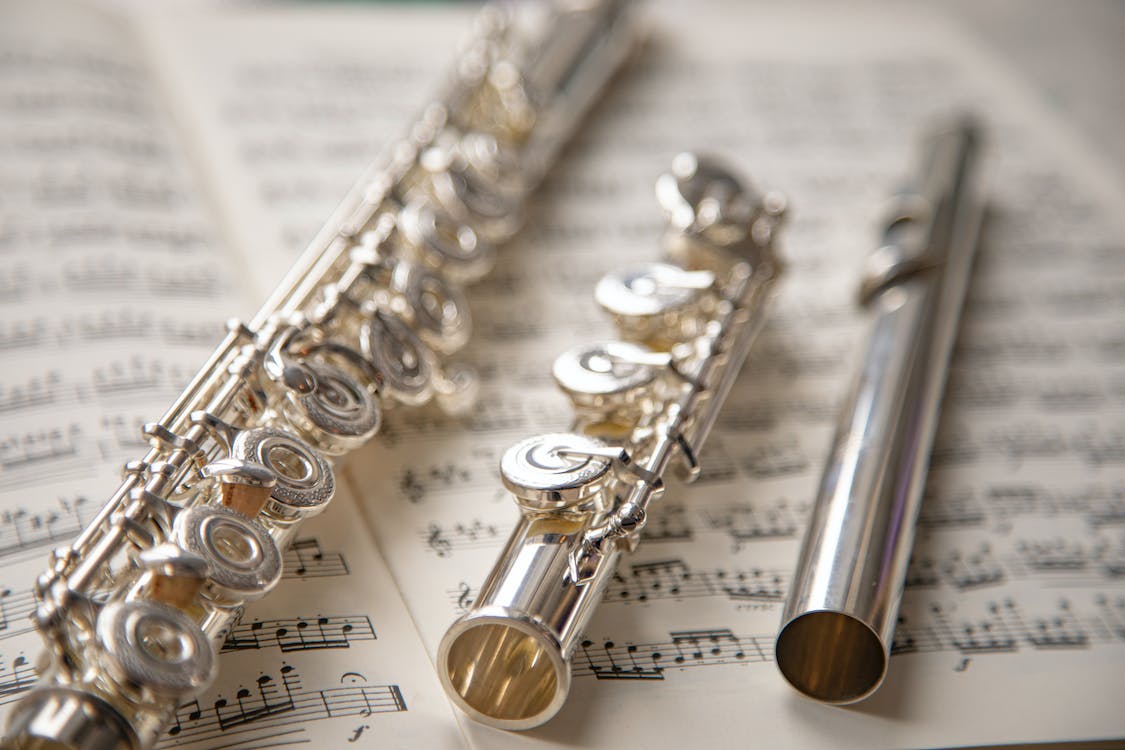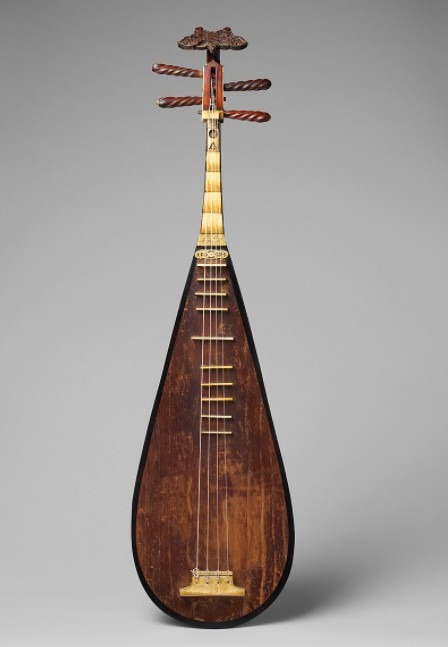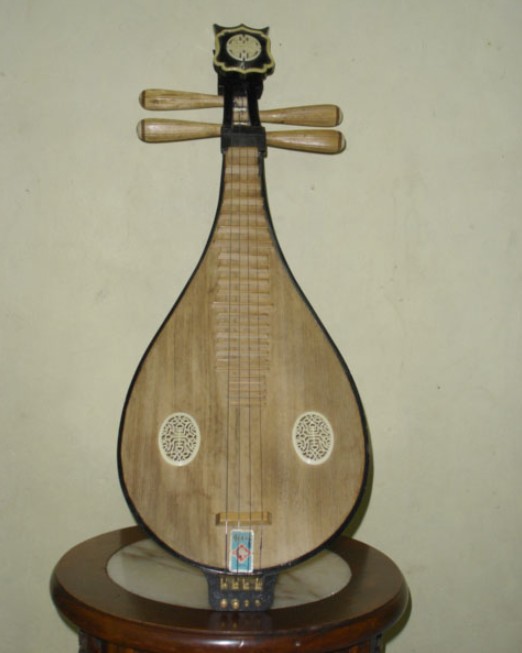There are various musical instruments that were popular in China back then. Some of these instruments were the Pipa, luiqin, and guzheng. These stringed instruments originated in different regions of China, and throughout the years, these instruments were modified. Below is the list of Chinese stringed instruments that produce poignant yet beautiful melodies.
Pipa
Pipa is a Chinese four-stringed lute that has a pear-shaped body and thirty frets. It dated back from about 2000 years ago and was developed from pentatonic to full-scale instrument. It also has an extremely wide dynamic range and an incredibly expressive sound. When playing the Pipa, the performer usually held the instrument upright and played with five plectra or picks attached to each finger of the right hand.Its tune was arranged from highest to lowest, with string number one being the highest and string number four as the lowest. This instrument has a delicate tonality. In fact, its sound was described as ‘sudden splatters of rain,’ or ‘like a hum of a lover’s whisper’ in a poem written by Bay Yuji of the Tang Dynasty.
Liuqin
There are various names in which the liuqin is known, including the names liuyeqin or tu pipa (unrefined Pipa). Liuqin is another Chinese stringed instrument with four strings. It somehow resembles the pipa instrument, although it was smaller in size. Unlike the Pipa, the liuquin sounds like a mandolin and is often accompany instruments for local opera or folk music. Historically, this instrument was made out of willow wood, while professionals prefer to use sandalwood. In the contemporary versions of the liuqin, the musical instrument’s maker uses tong wood as its front wood and red sandalwood for its reverse side.
Guqin
The guiqin is a Chinese zither with seven strings. However, it has no bridges and is considered as the most classical Chinese instrument that originated 3000 years ago. Most often, this instrument is said to be used for elevating the human spirit and enriching the heart. Around 600 BC, Confucius was also said to be a master of this instrument. Meanwhile, during the Imperial era, educated elite people were expected to master the four arts, and one of them is the guiqin among the Go (an abstract strategic game), Shu (Calligraphy), and Hua (painting). Being on top of Chinese traditional art, this instrument has been considered as one of the most important symbols of Chinese culture.
Se
Se is another Chinese zither that has twenty-five to fifty strings with five octaves and removable bridges. Like the other ancient Chinese instrument, the se was also considered as one of the most important stringed instruments created in China. Surprisingly, unlike other stringed instruments, the se’s strings are made out of twisted silk with a variety of thicknesses. According to history, the se initially had five strings until it became a fifteen stringed zither. Following that, when Emperor Shun came into power, he then added eight strings, thus making it a twenty-three stringed se. However, according to some reports, it started as a fifty stringed instrument and was later reduced to twenty-five strings. Despite these, archeological findings usually unearthed se with about nineteen, twenty-four, or twenty-five strings.
Zheng or Guzheng
Guzheng is a Chinese stringed instrument that has a movable bridge and sixteen to twenty-five strings. Despite its Chinese origin, the guzheng is in the same family as other Asian instruments like the koto of Japan, dan trankh of Vietnam, Yagta of Mongolia, and the kayagum of Korea. During the Qing Dynasty, like the se, its strings were made out of twisted silk. However, later on, its strings were changed into a bare wire. In the modern-day, the guzheng’s strings were typically made of nylon or steel coated in nylon. According to the legend, the guzheng was half of se. It was produced when two people fought over the twenty-five stringed se, and as it broke in half, one person received the twelve stringed instrument, and the other received the thirteen stringed part.
Konghou
Konghou is a Chinese stringed instrument that appears in the Spring and Autumn, a text that was written around 600 BC. The reproduction of this instrument began in the 50s. This instrument is somewhat similar to the harp, but the Konghou’s bridge has a string span identical to the Guzheng. There are three types of Kongshou. One is the wo-kounghou, the horizontal one, the su-konghou, the vertical one, and the phoenix-head konghou. However, not much of this instrument has been preserved, but it wasreproduced in the 50s. Afterward, it was revived in the 20th century as a double bridge harp, and it does not resemble the old version of the konghou.
Qinqin
Sometimes known as the plum blossom instrument, the qinqin is a Chinese lute that has a round wooden body, three strings, and a fretted neck. Although it has three strings, two strings were only used when in an ensemble. Most particularly, the qinqin is notable in southern China, including in Guandong, Macau, and Hong Kong.
Dutar
The dutar is a Chinese stringed instrument that has two strings placed in its long neck. It can mostly be found in Central Asia, as well as in Persia, Iran, and Afghanistan. Originally, the dutar is a shepherd’s instrument that was used in the 15th century. However, upon the opening of the silk road, the instrument was then imported. Like the guzheng and se, the dutar’s strings were made out of silk. But some dutar nowadays usually have nylon strings.



